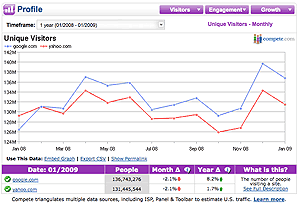The (In) Complete Start-Up Internet Marketing Guide
For my fellow world inhabitants at this time of global economic turmoil, we must help each other, now more than ever.
A friend of mine recently lost his job. He was smart enough to see the writing on the wall and make some plans before his employer went under, but it has still had a major impact on his economic well being. As we watch the news stories of companies getting multibillion dollar bailouts so that their CEO’s can fuel up their private jets, others are suffering.
So how can we make a difference? Well we can use whatever expertise and services or products we provide to help others. We are going on the “Teach a man to Fish” principle, so let’s go fishing everyone!
This (In) Complete Startup Internet Marketing Guide is my way of doing just this. The guide is not meant to be a comprehensive internet marketing manual, instead it is meant to teach real people the hands on how to’s of internet marketing. For example you will learn how to pick a valuable domain name, or how to find targeted keywords for a website, or how to get free search engine traffic.
Over the coming months I invite you to contribute, share and help build this resource and your own internet business through this blog. I will provide the framework and your comments, tips, articles and twitter posts will provide the life to this project. Let’s jump right in and start the step by step notes on building your business online. We are going to assume that you have no current site and start with the basics.
Pick A Topic Or Niche
In the early days of the Internet you could just pick some major industry or topic and start your website. Those days are over. Now you have to think niche to be successful. I recommend you pick something you are interested in and will enjoy researching and writing about. There are some market based numbers to consider; mainly you need something that has a large enough market appeal that you can make money yet is small enough that you won’t be competing with tons of highly successful businesses already on the web. You can target the top markets but make it your own, find your own niche.
Here we go. Pick a topic that is general and that you are interested or at least willing spend a lot of time researching and writing about. I suggest something such as a hobby, maybe extreme sports or deep sea fishing if you are so inclined.
Keyword Research For The Search Engines
Now you need to do some research to figure out the exact area within the niche you should focus on. There are many ways to learn how to pick good keywords for your Internet marketing.
Rules For Target Search Engine Keywords
1. The longer the keyword phrase the fewer number of searches and the less competition.
2. Pick a topic that has a total of at least 10,000 searches per month across the main keywords you target.
3. Find 1-3 top keywords, 5-8 medium targets and up to 20 total in your target basket.
4. You want to pick terms, at least for your basket of keywords that have high search volume and low competition.
You may want to take a minute to review this list of keyword tools. Let’s keep it easy and go with one tool that we are going to use throughout our marketing efforts. Download and install this SEO Toolbar for FireFox from SEO Book. This keyword tool will save you a ton of time in the long run. In general I am not a big fan of plug-ins but I have to give it to www.SEOBook.com they have done a great job with this one.
Once you have the tool bar set up, go to the keyword entry box on the right and input your most basic keyword phrase for your topic or niche. For example let’s put in “deep sea fishing”. You can customize which windows and tools will open but let’s leave it on the default ones.
Three pages should open:
1. SEO Book Keyword Suggestion Tool
Take a look at the Overall Daily Est result for “deep sea fishing” it shows 270 (as of July 12, 2009). This means there are about 270 searches per day across the search engines for the exact phrase of deep sea fishing. This is not bad for a 3 word phrase. Keep in mind although you may be targeting and writing about deep sea fishing, you will also have a basket of keyword that you target in addition to this one term.
2. Google Adwords: Traffic Estimator
On this page you want to take a look at the PPC value for your main target phrase. Keep in mind this is just an estimate and it is for people who want to pay Google for the keyword not what Google will pay its publishers who get clicks for the term. A publisher is what you will be called when you run advertising for other companies on your web site. You want to find keywords that cost a minimum of about $1.00 per click. In this case our phrase is estimated to cost from $.64 to $1.05 for advertisers.
3. Google AdWords: Keyword Tool
This is where you measure SEO Book’s keyword estimator tool vs Google’s. Local Monthly Search Volume is estimated at 368,000 and Global Monthly Search Volume is estimated at 201,000 searches. As you can see there are plenty of searches on this term. You should also check out the Advertiser Competition bars, in our case the main term (“deep sea fishing”) is competitive.
As you can see there are some significant differences between the tools and their estimates. Don’t worry too much about this right now, basically this is the reason you need to use more than one tool.
It is a good idea to download all the information you just researched if you think you found your main target keyword, if not rinse and repeat. In addition to a single topic or niche phrase you need to pick 5-8 top target related keywords to use as categories and a total of about 20 keywords to use in articles and long-term comprehensive marketing efforts. The top 5-8 keywords should follow the guidelines above, while the additional keywords to fill out your 20, can be ones you think are important, relevant or of interest to you.
Geo-targeting allows businesses to tailor their marketing efforts to audiences in specific geographic locations.
When comparing a branding agency vs creative agency, the former specializes in building brand identity, while the latter focuses on innovative design and content.
Pick Your Domain
This will become your brand. Most search marketing experts estimate that the domain name has about a 20% impact on your ability to garner relevant search engine traffic. For sites in less competitive niches you may be able to get significant share of search traffic once you begin your marketing efforts, if you have selected a good domain name.
Rules for Selecting a Domain name:
1-9. These rules are covered well on SEOmoz. You can pretty much ignore rules 9-11. Rule 9 is generally correct, but for some strong keyword domains, up to two hyphens may work well. In other words if the keywords are very high volume and the hyphen version is available, you can consider it along with other options.
10. Keep domain names as short as possible. #6 in the SEOmoz article but worth repeating.
11. Put the most important words first. This usually means put the keyword with the highest volume of searches in the beginning of the domain.
12. If you can’t find what you are looking for try adding location words or popular keywords. For example if “deepseafishing.com” is not available, it is probably better to buy something like “floridadeepseafishing.com” rather than unrelated like “deepseafishingtoday.com”.
It may be easiest to register your domain at your hosting company. If you plan on purchasing a lot of domains you can get a bulk registration account at a place like GoDaddy.com.
Hosting
There are many options for hosting. For the purpose of this Internet Marketing Guide we will provide two suggestions that we have experience with.
Proper Hosting
This green web hosting company provides 1-click Word Press Blog install. Also I have a deal set up with them to provide their clients free microsites for use with this guide. Maybe most important this company has the capability to put each domain on a separate ip address by request. We are going to recommend you start a few sites on different niches later so you can see which ones work best. They also provide cPanel. I have secured a special deal because of their mention here, use promo code: InternetMarketing.
Host Gator
They provide good hosting for a good price and have all the basic tools you would expect including cPanel Administration so you can manage your account on a very detailed level. When you are ready to build multiple sites they have a specialized SEO Hosting Service that some may find useful. I have had issues where the shared server is overloaded and slow. Overall, they are generally dependable.
(In) Complete Start-Up Internet Marketing Guide - Post 1 of ? (many)
Gideon Rubin is the CEO at Simply Ideas LLC and also serves as an advisor for several start-up websites including branded URL shortener 9mp.com and Twitter introduction engine, Twitroduce.com. Follow him on Twitter or connect with him on LinkedIn.






